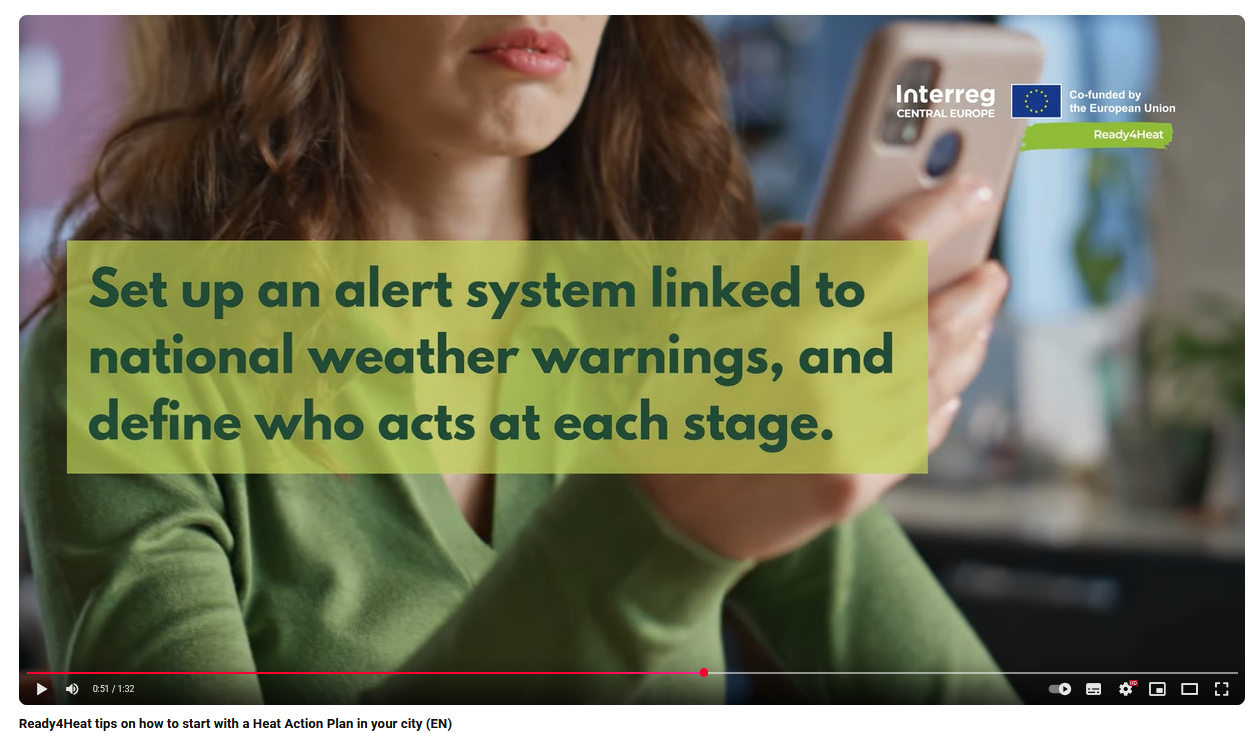The video lays out a practical roadmap for municipalities that are ready to build or strengthen a Heat Action Plan. It’s meant as a gateway resource: no need for prior expertise, just political will and a willingness to begin.
You can watch the video here:
Ready4Heat tips on how to start with a Heat Action Plan in your city
YouTube
Why This Matters Now
Cities are already being pushed to adapt — heatwaves are not just becoming more frequent, but more dangerous. For city administrations, starting a Heat Action Plan is no longer optional: it’s essential for protecting public health, ensuring infrastructure resilience, and meeting the expectations of both citizens and national/regional policy frameworks.
With this new video + accompanying tips, Ready4Heat aims to lower the barriers: you don’t need huge budgets or perfect data to begin. You just need to start with what’s feasible and build from there.
How City Administrations Can Use the New Materials
Here are some suggested next steps for municipal climate adaptation teams, emergency services, public health departments, and related agencies:
- Showcase your plans to build a Heat Action Plan with key stakeholders starting with the video (e.g. health department, social services, urban planning, environment office) to build a shared understanding.
- Carry out a rapid assessment of your city’s heat risks: map vulnerable populations (elderly, children, outdoor workers, etc.), identify heat-island areas, assess past heatwave impacts.
- Define roles, responsibilities, and governance: decide who leads, which departments/departments are involved, where coordination lies; establish contacts and lines of communication ahead of heat seasons.
- Launch quick‐wins: cooling shelters, early warning alerts, public awareness campaigns, opening shaded public spaces, distributing advice for at-risk groups.
- Embed this work in your broader adaptation strategy, linking Heat Action Plans to other climate resilience measures, urban greening, water management, building codes, etc.
- Monitor, review, and iterate: once heat events occur, learn from them; update the plan and practices accordingly.
What’s Next for Ready4Heat
Over the coming months, we’ll be releasing:
- Follow‐up resources, including templates for Heat Action Plans you can adapt locally.
- Case studies from cities that have already adopted or piloted these tips, sharing challenges and lessons learned.
- Workshops/webinars for city leaders and practitioners to exchange ideas and support each other in implementation.
Video on Tips for Vulnerable Groups During Heatwaves
We are also excited to release a new video on: “Ready4Heat tips for vulnerable groups during heatwaves”. This video is designed as a practical communication tool that municipalities can use to reach and support their most at-risk residents during extreme heat events. (Watch here on YouTube)
The video provides easy-to-understand guidance for vulnerable groups, such as older adults, young children, people with chronic illnesses, and individuals living in poorly insulated homes. It explains how to stay safe during a heatwave, helps to recognise warning signs of heat stress and when to seek medical help and offers rractical tips to reduce indoor temperatures without costly equipment.
By using this Ready4Heat video, cities can strengthen their communication strategies and make sure that protective messages reach those who need them most.
How Municipalities Can Use the Video
City administrations and frontline services can integrate this video into their communication efforts in several ways:
Public awareness campaigns, Community outreach — show the video in senior centers, libraries, medical waiting rooms, and local associations, Direct support services — use it as part of training for caregivers, social workers, and volunteers who regularly visit vulnerable households, Translations & subtitles — adapt the video into local languages or formats to increase accessibility.
This video is available in English, Hungarian and Slovenian.
